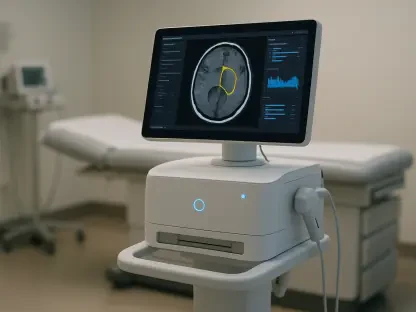Radiologists play a crucial role in the healthcare system, interpreting medical images to diagnose and monitor various conditions. However, their performance can vary significantly, impacting the quality of their reports and, consequently, patient care. This article delves into the metaphorical association of different types of arrhythmias (abnormal heart rhythms) with the varying performance characteristics encountered among radiologists. It explores the implications of these performance patterns for both radiologists and their institutions.
Erratic Performance Patterns
The “Atrial Fibrillation” Radiologist
Radiologists with performance variability akin to Atrial Fibrillation produce highly inconsistent reports. Their work can range from extremely accurate to completely off-track, with no discernible pattern. This unpredictability can be challenging for healthcare teams relying on consistent and reliable diagnostic information. The erratic nature of their performance mirrors the irregular heart rhythm seen in Atrial Fibrillation, making it difficult to anticipate the quality of their reports.
The implications of having an “Atrial Fibrillation” type radiologist are significant. Inconsistent reporting can lead to delays in diagnosis, incorrect treatments, and a general lack of trust in radiological findings. This variability can create a ripple effect, where other medical professionals might second-guess the radiologist’s reports, leading to additional tests and increased patient anxiety. Thus, managing radiologists who exhibit these erratic performance patterns is crucial for maintaining the integrity of the diagnostic process.
The “Wenckebach” Radiologist
In contrast, some radiologists exhibit a pattern of predictably poor performance, similar to the cardiac rhythm disturbance known as Mobitz type I or Wenckebach. These radiologists may produce high-quality reports using well-constructed templates for normal scans but struggle with incoherent free-text reports. This predictable irregularity can be managed to some extent, but it still poses significant challenges for maintaining high standards in radiological reporting.
The main issue with the “Wenckebach” radiologist is their inability to handle atypical or complex cases effectively. While their performance might be acceptable for straightforward scans, any deviation from the norm can result in subpar reports. This can be particularly problematic in settings where timely and accurate interpretation of complex images is crucial. For institutions, recognizing and addressing these predictable performance gaps is essential. Providing these radiologists with additional training and support can help improve their overall competence and reliability.
Impact of Work Speed on Performance
The “Ventricular Tachycardia” Radiologist
Radiologists who work at an excessively fast pace, akin to Ventricular Tachycardia, may compromise the quality of their reports. The high-output, rapid work rate can lead to careless mistakes and overlooked details, which are detrimental to patient care. This pattern of performance highlights the risks associated with prioritizing speed over accuracy in radiological reporting.
When radiologists operate at a pace too swift, the likelihood of errors increases, and the thoroughness of their analysis decreases. Such practices can result in misdiagnoses, unnecessary follow-up procedures, and potential harm to patients. Institutions must balance the emphasis on productivity with the need for precise and accurate work. By fostering a culture that values meticulousness alongside efficiency, healthcare organizations can mitigate the adverse effects of excessively rapid work practices.
The “Bradycardia” Radiologist
On the other end of the spectrum, radiologists with a markedly slow work rate, similar to Bradycardia, may not necessarily produce poor-quality reports. However, their slow performance often points to underlying issues such as inexperience, distraction, or burnout. These radiologists may require additional support and training to improve their efficiency without compromising the quality of their work.
The consequences of a “Bradycardia” radiologist’s slow pace can include delays in patient care, increased workload for colleagues, and overall inefficiency within the department. Addressing these issues often requires a multifaceted approach. Providing targeted professional development opportunities and creating a supportive work environment can help these radiologists increase their speed without sacrificing the thoroughness of their analyses. Institutions can benefit greatly from recognizing and proactively addressing the reasons behind a radiologist’s slow performance.
The Consequences of Persistent High Output
The “Persistent Sinus Tachycardia” Radiologist
Radiologists who maintain a consistently high level of output, akin to Persistent Sinus Tachycardia, may initially appear to be highly productive. However, the continuous high-stress work environment can lead to burnout and poor health outcomes. This pattern of performance is unsustainable in the long term and can negatively impact both the radiologist’s well-being and the quality of their reports.
The dangers of persistent high output extend beyond immediate work performance. Chronic stress and burnout can lead to long-term health issues, decreased job satisfaction, and increased turnover rates within radiological departments. Institutions must recognize the signs of burnout and implement strategies to promote sustainable work practices. Encouraging regular breaks, offering mental health resources, and ensuring manageable workloads are essential steps in supporting radiologists’ long-term well-being and effectiveness.
The Ideal: “Sinus Rhythm” Radiologist
The goal for radiologists is to maintain a steady and balanced work rate, similar to a healthy Sinus Rhythm. A well-adjusted work environment that does not impose excessive demands ensures that radiologists can maintain high standards without compromising their health. Achieving this balance is crucial for optimizing both professional efficacy and personal well-being.
A “Sinus Rhythm” radiologist’s balanced approach not only benefits their own health but also ensures the highest quality of care for patients. By fostering an environment that supports this balance, healthcare institutions can enhance the overall effectiveness and satisfaction of their radiology departments. Investing in the professional and personal development of radiologists, along with promoting a healthy work-life balance, can lead to better outcomes for both providers and patients.
Managing Performance Variability
Tailored Interventions for Erratic Performance
Radiologists exhibiting erratic performance traits require tailored management strategies. For those with unpredictable variability, implementing structured reporting templates and providing regular feedback can help improve consistency. For those with predictably poor performance, targeted training and support can address specific weaknesses and enhance overall report quality.
Institutions must adopt a proactive approach to managing radiologists with erratic performance. Regular performance reviews and continuous professional development opportunities can help identify and address areas of weakness. Creating a culture of open communication and support can encourage radiologists to seek help and make necessary improvements. By investing in these tailored interventions, healthcare organizations can significantly enhance the reliability and quality of radiological reporting.
Addressing Speed-Related Challenges
Managing radiologists who work at extreme speeds involves finding a balance between output and accuracy. For those working too quickly, encouraging a more measured pace and emphasizing the importance of thoroughness can reduce errors. For those working too slowly, identifying and addressing the root causes of their inefficiency—whether it be inexperience, distraction, or burnout—can help improve their performance.
Institutions must recognize that different radiologists have varying needs and adapt their management strategies accordingly. For high-paced radiologists, ensuring that workloads are manageable and emphasizing the value of quality over quantity can help reduce mistakes. For those struggling with slow speeds, providing additional resources and support can enhance their efficiency. By addressing these speed-related challenges comprehensively, healthcare organizations can foster a more balanced and effective radiology department.
Fostering a Balanced Work Environment
Promoting Sustainable Work Practices
Creating a work environment that promotes sustainable practices is essential for maintaining high standards in radiological reporting. This involves setting realistic expectations for output, providing adequate support and resources, and encouraging regular breaks to prevent burnout. By fostering a balanced work environment, institutions can ensure that radiologists remain productive and healthy.
Promoting a culture of sustainability within radiological departments can lead to improved job satisfaction and overall performance. Ensuring that radiologists have access to the tools and support they need to perform their duties effectively can reduce stress and prevent burnout. Encouraging regular feedback and promoting an open dialogue about workload and work-life balance can further enhance the work environment. By prioritizing sustainable work practices, healthcare institutions can create a more supportive and productive atmosphere for radiologists.
Supporting Radiologist Well-Being
Radiologists have a pivotal role in the healthcare system, as they interpret medical images to diagnose and monitor various health conditions. However, the performance of radiologists can vary widely, which in turn affects the quality of their reports and the overall patient care. This article examines the metaphorical link between different types of arrhythmias (abnormal heart rhythms) and the performance variations seen among radiologists.
Arrhythmias, which are irregular heartbeats, can provide a useful analogy to understand the inconsistencies in radiologists’ performance. Just as arrhythmias can range from benign to life-threatening, radiologists’ work can vary from highly accurate to significantly flawed. The article delves into the consequences of these performance disparities for both radiologists and the institutions they work for, highlighting the importance of continuous training and quality control. By addressing these issues, healthcare can improve overall patient outcomes and ensure more reliable and effective use of medical imaging.









